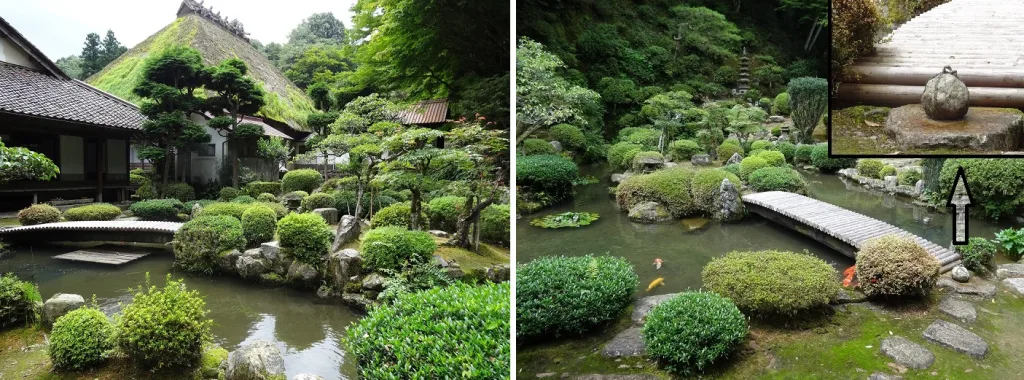投稿日:2023年07月07日
Yomeiji is a temple built in 1420 by the feudal lord of Tsuwano domain at the time, the Yoshimi-clan. The temple served as the family temple for the successive feudal lords of Yoshimi (1282-1600), Sakazaki (1601-1617) and Kamei (1618-1871).
This temple was one of Japan’s two greatest Soutoushu (曹洞宗 religious sect) temples during the Edo Period (1603-1867). It had as many as 77 branch temples in this region and was called ‘Sekishu Honzan’. (石州本山, translates as ‘headquarters’).
Located at the western foot of Tsuwano Castle, Yomeiji Temple was the domain lord’s family temple for successive generations. However, the relationship was severed when Koremi Kamei changed funerals and ceremonial occasions to Shinto during the start of the Meiji Period (1868~).
This painting a scene in which the domain lord is paying a visit at a time when the Yomeiji was still the family temple. The domain lord has exited the palanquin at the inner gate and is walking toward the main hall. The scenery also shows his attendants waiting patiently outside the inner gate.
In 1862, the ‘alternate attendance system to Edo’ (参勤交代 Sankin-kotai) was abolished, allowing the domain lords’ wives and children living in Edo to return to their feudal domain for the first time.
Mitsuko, the wife of Lord Koremi Kamei, departed Edo in November of that year and arrived at the palace in Tsuwano in January of the next year. A procession began to form and a formal visit was made to the Yomeiji Temple.
This view depicts the procession as it moves up the slope of the Yomeiji Temple. The crest on the palanquin is a ‘Three-Leaf Hollyhock in a Circle’, the family crest of Lord Matsudaira (Mitsuko’s family) of Takamatsu Castle in Sanuki Province. The obi (sashes) worn by the accompanying maidservants are called ‘tsutsu-obi’ (tube sash belt).

During the Edo Period, there was a big gate in Tonomachi Street that separated the samurai zone and the merchant zone. An identity card was required to enter the samurai zone and the gate had a tight security with guards at all times.
An interesting story about Yomeiji Temple; during the modernization of Japan in the Meiji Period, when the cast system was abolished, the main gate that separated the samurai zone and merchant zone in Tonomachi Street, was relocated to this temple.
When you enter the Yomeiji Temple, imagine that you are in the Edo period crossing the gate that separated the ruling Samurai class from the commoners.

The temple has a beautiful garden, where the thatch-roof of the main building together with the tile-roof of the side building makes for a beautiful background.
In japan, if you wonder into the garden, and see a small of this size with often a rope around it, it means that that road is temporally closed. This sign comes from the Japanese tea-ceremony, and is a subtle way to tell guests where to go, a lot better than a big harsh sign.
Yomeiji temple is also where one of the leading writers of the Meiji period Ougai MORI was buried, also known for being a Surgeon General of the Army, the highest rank in the Medical Corps.